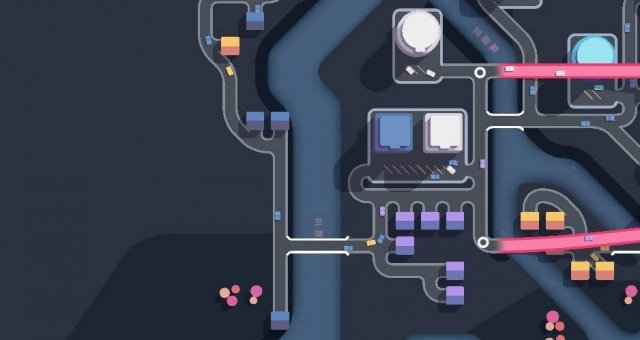

How do you take this basic process and deepen it, so that player strategy has enough of an effect that some approaches work and others don't? How do you keep good play from being trivial, while also not turning into an insurmountable wall of difficulty at Week X? Has that been a concern for you? Our timelines for the Steam release did unfortunately shift a little due to the pandemic, but our community has always been very supportive even with the delays as they understand that good things take time!Īt its simplest, these are games about drawing lines (either all at once or piecemeal) between destinations. In the time since the Apple Arcade launch, we’ve followed a very similar approach to what we did with Mini Metro’s launch and have taken about a year to make sure our new community was supported and able to share their ideas with us while we built up a regular cadence of updates before taking on a new platform. Do you think being Arcade-only has helped or harmed its uptake?Īctually, Mini Motorways wasn’t an Apple Arcade exclusive however, as we’re a small team we’ve always found that it’s important for our studio to take our time and focus on quality, rather than rush to release on every platform as soon as possible. Mini Motorways is now on Steam after a couple of years as an Apple Arcade exclusive. The physicality of the simulation presents an entirely different set of problems to Mini Metro. It’s a fascinating, complex, unintuitive problem, just like real urban planning. A long road has a high capacity, but it is also likely used by more routes the more routes that pass through a road, the more cars use it, and the more intersections they’ll pass through resulting in lower overall throughput. Instead capacity becomes the primary issue because cars occupy physical space. Frequency isn’t a concern because the people don’t have to wait for a train before they can depart. A lower frequency leads to longer waiting times, which can be the beginning of the end for your metro map.īy contrast, road length is restricted in Mini Motorways, but keeping the links between houses and destinations short isn’t as critical as it is in Mini Metro. However, stretching a line to connect more stations reduces the frequency of trains stopping at each station along the line. Each metro line is unrestricted in length which means connecting new stations to the network isn’t a problem and new lines allow you more flexibility in building your network. In Mini Metro the player’s primary concern is frequency.

How is it different, in terms of play, from its illustrious predecessor?Īt first blush they appear very similar! There’s a familiarity to the loop of both games however, we found early on in prototyping that there are fundamental differences between the two simulations that lead to different play. Mini Motorways is a follow up to Mini Metro, and you broadly do the same thing: connect destinations. We’ve been very fortunate to have been able to keep supporting Mini Metro through some pretty big feature additions even after many years, such as last year’s Steam Workshop integration, which was championed by one of our amazing community members who originally developed a modding system called Mini Metro More. Mini Metro has come a long way since its inception - we’re adding our 27th map in the next update! Part of the reason people keep coming back to Mini Metro is because of our frequent updates to the game we’re always adding new maps and challenges as well as improving various aspects of the game and the community really appreciates this. We have players who have been there since day one all the way through to players who have just discovered Mini Metro this past month. Right from Mini Metro’s game jam beginnings, we have been continually surprised by the enthusiastic response to the game - we’re eight years on now and our community is still very much alive and growing. How is it doing these days? Is its success surprising to you? Following that Steam launch, the kind folks at Dinosaur Polo Club sat down with Gamasutra to dig into how simple systems build toward complex experiences, the key differences behind the design of the two seemingly similar titles, and more.Īfter seven years, Mini Metro is a great indie success story. Mini Motorways first debuted on Apple Arcade in 2019, but has recently crossed the platform divide to land on Steam in Early Access and bring its engaging mix of casual, easy-to-learn play and oceans-deep strategy to a wider audience on PC.


 0 kommentar(er)
0 kommentar(er)
